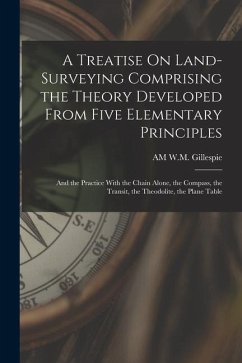
Comparing Theory and Practice

PAYBACK Punkte
8 °P sammeln!
Complexity theory has attracted considerable interest from operational artists in recent times. However, because it is still an emerging field, there are few -- if any -- historical case studies that show how complexity applies to military operations. Using the comparison method, this review compares the similarities and differences between a historical case study and insights from complexity theory in order to evaluate the utility of complexity theory for military practice. The first three months of Lieutenant General Matthew Ridgway's command of the Eighth Army during the Korean War is chose...
Complexity theory has attracted considerable interest from operational artists in recent times. However, because it is still an emerging field, there are few -- if any -- historical case studies that show how complexity applies to military operations. Using the comparison method, this review compares the similarities and differences between a historical case study and insights from complexity theory in order to evaluate the utility of complexity theory for military practice. The first three months of Lieutenant General Matthew Ridgway's command of the Eighth Army during the Korean War is chosen for the historical case study, as an exemplar of successful operational command. Complexity theory is compared with how Ridgway understood, perceived, and approached the complexity of his operational environment. Complexity theory offers broad guidelines for action, such as: use simple rules to generate complex behavior; look at the system from multiple scales to gain better perspective; achieve a holistic picture of the situation by recognizing interdependence; and continually adapt to a changing environment. The comparative analysis shows good agreement between these recommendations of complexity theory and Ridgway's successful campaign. A significant implication of this research is that complexity theory and history can be complementary perspectives for appreciating operational art. Leaders who understand complexity theory as well as military history may be better prepared for the challenges they will face in an uncertain future. This work has been selected by scholars as being culturally important, and is part of the knowledge base of civilization as we know it. This work was reproduced from the original artifact, and remains as true to the original work as possible. Therefore, you will see the original copyright references, library stamps (as most of these works have been housed in our most important libraries around the world), and other notations in the work. This work is in the public domain in the United States of America, and possibly other nations. Within the United States, you may freely copy and distribute this work, as no entity (individual or corporate) has a copyright on the body of the work. As a reproduction of a historical artifact, this work may contain missing or blurred pages, poor pictures, errant marks, etc. Scholars believe, and we concur, that this work is important enough to be preserved, reproduced, and made generally available to the public. We appreciate your support of the preservation process, and thank you for being an important part of keeping this knowledge alive and relevant.












